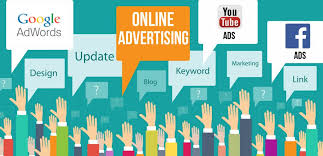Interactive Marketing Campaigns: Engaging Your Audience Like Never Before
Interactive marketing campaigns have revolutionised the way businesses connect with their audience. By incorporating interactive elements into their marketing strategies, companies can engage users in a two-way conversation, creating a more personalised and memorable experience.
What are Interactive Marketing Campaigns?
Interactive marketing campaigns involve using various digital tools and platforms to engage with consumers in a dynamic and participatory way. These campaigns encourage users to actively participate in the brand’s messaging, rather than passively consuming content.
The Benefits of Interactive Marketing Campaigns
There are several benefits to incorporating interactive elements into your marketing campaigns:
- Increased Engagement: Interactive campaigns capture users’ attention and encourage them to spend more time interacting with your brand.
- Personalisation: By allowing users to choose their own path through the campaign, you can tailor the experience to their preferences and interests.
- Data Collection: Interactive campaigns provide valuable data on user behaviour and preferences, which can inform future marketing strategies.
- Viral Potential: Engaging and memorable interactive campaigns are more likely to be shared on social media, increasing brand visibility.
Examples of Successful Interactive Marketing Campaigns
Many brands have leveraged interactive marketing to great success. Examples include:
- Burger King’s “Whopper Sacrifice”: Burger King invited Facebook users to sacrifice 10 friends in exchange for a free Whopper. This campaign generated buzz and increased brand awareness.
- Dove’s “Real Beauty Sketches”: Dove created an interactive video where women described themselves to a forensic artist. The emotional campaign resonated with viewers and went viral.
- Taco Bell’s Snapchat Filter Game: Taco Bell launched a Snapchat filter game where users could play as a taco and earn real food prizes. The campaign drove engagement among younger audiences.
Incorporating Interactive Elements into Your Campaigns
To create successful interactive marketing campaigns, consider the following tips:
- User-Centric Design: Ensure your campaign is intuitive and easy for users to navigate.
- Creative Content: Develop engaging content that encourages interaction and sharing.
- Cross-Platform Compatibility: Make sure your campaign works seamlessly across different devices and platforms.
- Data Tracking: Use analytics tools to track user engagement and gather insights for future campaigns.
In conclusion, interactive marketing campaigns offer a powerful way to connect with your audience on a deeper level. By creating engaging experiences that encourage participation, you can build stronger relationships with consumers and drive better results for your business.
Understanding Interactive Marketing Campaigns: Key Questions and Examples
- What is an interactive marketing campaign?
- What is interactive marketing with examples?
- What does interactive marketing consist of?
- What is a good example of interactive marketing?
- What are interactive marketing campaigns?
- What is an example of an IMC campaign?
- How do you do interactive marketing?
- What is an example of interactive advertising?
What is an interactive marketing campaign?
An interactive marketing campaign is a strategic approach that utilises digital tools and platforms to engage with consumers in a dynamic and participatory manner. Unlike traditional marketing methods, interactive campaigns invite users to actively participate in the brand’s messaging, fostering a more personalised and engaging experience. By incorporating interactive elements such as quizzes, polls, games, or immersive storytelling, businesses can create a two-way conversation with their audience, leading to increased engagement, data collection, and brand visibility.
What is interactive marketing with examples?
Interactive marketing involves engaging with consumers in a dynamic and participatory way, where users actively participate in the brand’s messaging rather than passively consuming content. Examples of interactive marketing campaigns include Burger King’s “Whopper Sacrifice,” where users were invited to sacrifice friends on Facebook for a free Whopper, Dove’s “Real Beauty Sketches” video that resonated emotionally with viewers, and Taco Bell’s Snapchat filter game offering real food prizes. These examples demonstrate how interactive marketing campaigns create memorable experiences that drive engagement and increase brand visibility through user participation.
What does interactive marketing consist of?
Interactive marketing consists of using various digital tools and strategies to engage with consumers in a dynamic and participatory manner. This approach focuses on creating interactive experiences that encourage users to actively participate in the brand’s messaging, rather than just passively consuming content. By incorporating elements such as quizzes, polls, games, augmented reality, and personalised content, interactive marketing campaigns aim to capture users’ attention, drive engagement, and create a more personalised and memorable interaction with the brand.
What is a good example of interactive marketing?
A prime example of a successful interactive marketing campaign is Burger King’s “Whopper Sacrifice” initiative. By inviting Facebook users to sacrifice 10 friends in exchange for a free Whopper, Burger King cleverly engaged its audience in a playful and attention-grabbing manner. This campaign not only generated significant buzz and increased brand awareness but also showcased the power of interactive elements in capturing users’ interest and encouraging active participation.
What are interactive marketing campaigns?
Interactive marketing campaigns refer to strategic initiatives employed by businesses to engage their target audience in a participatory and dynamic manner. These campaigns involve utilising various digital tools and platforms to create interactive experiences that encourage users to actively interact with the brand’s content. Unlike traditional marketing approaches, interactive campaigns foster a two-way communication channel between the brand and its audience, allowing for personalised and memorable interactions. By incorporating elements such as quizzes, polls, games, and interactive videos, businesses can captivate users’ attention, enhance brand awareness, collect valuable data on consumer behaviour, and drive increased engagement levels.
What is an example of an IMC campaign?
An example of an Integrated Marketing Communications (IMC) campaign is the “Share a Coke” campaign by Coca-Cola. This interactive marketing campaign involved personalising Coke bottles with popular names and encouraging consumers to find and share their personalised bottles on social media. By creating a sense of personal connection and encouraging user-generated content, Coca-Cola successfully engaged its audience and generated buzz around the brand, demonstrating the power of IMC in building strong relationships with consumers.
How do you do interactive marketing?
To implement interactive marketing, businesses can utilise a variety of strategies and tools to engage with their target audience in a dynamic and participatory manner. This can include creating interactive content such as quizzes, polls, contests, and games that encourage user participation. Leveraging social media platforms for interactive campaigns, personalising user experiences through interactive websites or apps, and using email marketing with interactive elements like clickable images or surveys are also effective ways to execute interactive marketing. By focusing on creating engaging, two-way interactions with consumers, businesses can effectively drive brand awareness, increase engagement levels, and gather valuable insights for future marketing efforts.
What is an example of interactive advertising?
An example of interactive advertising is the “IKEA Place” app, which allows users to virtually place furniture items from the IKEA catalogue into their own living spaces using augmented reality technology. This interactive experience not only helps customers visualise how the furniture will look in their homes but also engages them in a fun and immersive way. By leveraging interactive elements like AR technology, IKEA effectively showcases its products and enhances the shopping experience for users, making it a standout example of successful interactive advertising.



